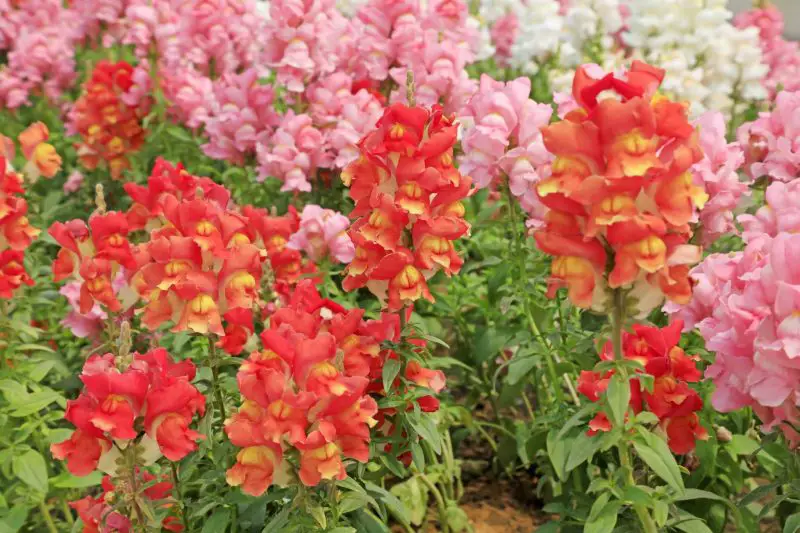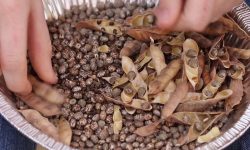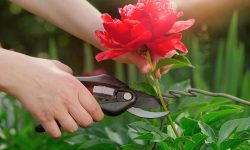Snapdragons (Antirrhinum majus) are a beloved garden flower, admired for their striking colors and unique, dragon-shaped blooms. Known for their long blooming season, snapdragons can brighten gardens from early spring all the way into fall.
But to keep them flowering consistently and looking their best, gardeners must perform a key maintenance task known as deadheading. Deadheading snapdragons not only enhances their appearance but also encourages the plant to produce more flowers rather than putting energy into seed production.
In this comprehensive guide, you’ll learn why deadheading is essential, how to do it correctly, and tips for keeping your snapdragons blooming abundantly.
Why Deadheading Snapdragons Matters

Snapdragons are naturally programmed to go through a flowering cycle that eventually leads to seed formation. When a flower fades and is not removed, the plant’s energy shifts toward seed development instead of making new blooms. This transition causes a decline in the number of flowers produced, reducing the overall vibrancy of your garden.
Deadheading, which means removing spent flowers, interrupts this natural process and sends a signal to the plant to keep producing fresh buds. By cutting off the old, faded blooms, you effectively extend the flowering period and improve the plant’s visual appeal. Furthermore, regular deadheading can promote stronger, bushier growth by encouraging side shoots to develop, which in turn results in more flowers.
Without deadheading, snapdragons may also become leggier, with tall, sparse stems and fewer flowers. This makes deadheading not only a way to boost blooms but also a method to maintain a healthy, compact plant structure.
Identifying When Snapdragons Need Deadheading
Timing is key to successful deadheading. Snapdragons typically produce flowers on spikes that bloom sequentially from the bottom upwards. As individual flowers fade, they wilt, discolor, and lose their shape. This visual cue is your sign that the flower is spent and ready to be removed.
It’s important to check your plants regularly during the growing season—at least once a week. This way, you can promptly remove any spent blooms before the plant starts forming seed pods. Removing flowers too late means some energy may have already gone into seed production, limiting the benefits of deadheading.
Additionally, when you notice that many flowers have faded on a spike, it might be best to cut the entire flower stalk back to encourage new growth from the base. This can rejuvenate the plant and stimulate fresh blooms to emerge.
Step-by-Step Guide to Deadheading Snapdragons
To deadhead snapdragons properly, start by inspecting the flower spikes carefully. Look for flowers that have turned brown, wilted, or shriveled. These are the blooms that need to be removed.
Using clean garden scissors or pruning shears, snip off each spent flower just above the first set of healthy leaves or buds below it. It’s best to avoid pulling flowers off by hand, as this can damage the stems or remaining buds.
If you notice that an entire flower spike has mostly faded, cut it back to the base of the plant or to a strong lateral branch. This encourages the plant to focus energy on producing new shoots and flowers instead of maintaining old, unproductive stems.
Be sure to clean your pruning tools regularly to prevent the spread of diseases. Deadheading is a gentle pruning process, so use sharp, precise cuts to avoid crushing the stems.
Additional Tips for Maintaining Blooming Snapdragons
While deadheading is crucial for prolonging snapdragon blooms, several other care practices can help your plants thrive. Snapdragons prefer full sun to partial shade and well-draining soil rich in organic matter. Consistent watering is essential, especially during dry spells, but avoid waterlogging the roots.
Fertilizing snapdragons monthly during the growing season with a balanced fertilizer supports healthy foliage and flower production. Mulching around the base helps retain moisture and suppress weeds, both of which reduce stress on the plant.
If your snapdragons grow too tall and leggy despite deadheading, consider pinching back the stems early in the season to encourage bushier growth. This practice complements deadheading by promoting more side branches and therefore more flowers.
Keep an eye out for pests like aphids or fungal diseases such as powdery mildew, which can weaken plants and reduce blooming. Prompt treatment with appropriate organic or chemical controls will keep your snapdragons healthy and vibrant.
What to Expect After Deadheading Snapdragons
Once you remove spent blooms, your snapdragons will redirect their energy into developing new flower buds. This process may take several days to a couple of weeks depending on growing conditions such as temperature, sunlight, and soil fertility.
During this period, you might notice fresh shoots emerging near the base or along the stems. New flower spikes will form and gradually open, extending the blooming season. Regular deadheading throughout the growing season can keep snapdragons flowering continuously until the first frost.
It’s important to maintain consistent care even after deadheading by watering, feeding, and monitoring plant health. Combined with proper deadheading, these practices maximize the lifespan and beauty of your snapdragon plants.
Common Mistakes to Avoid When Deadheading Snapdragons
One common mistake is waiting too long to deadhead. Allowing flowers to fully mature into seed pods before removal reduces the incentive for the plant to produce new flowers and shortens bloom duration.
Another error is removing too much foliage along with the spent blooms. Leaves are vital for photosynthesis and overall plant health. When cutting back faded flowers, only trim the flower itself or the flower stalk without damaging the leafy parts.
Using dull or dirty pruning tools can cause ragged cuts and increase the risk of infection. Always sterilize your scissors or pruners before and after use, and keep them sharp to ensure clean cuts.
Finally, some gardeners try to deadhead by pulling flowers off with their hands, which can tear stems or remove buds accidentally. Always use proper cutting tools to preserve the plant structure.
Can Deadheading Improve Snapdragons in Containers?
Snapdragons grow well in pots and containers, making them popular for patios and balconies. Deadheading container-grown snapdragons is just as important as for those in garden beds because pots can limit root space and nutrient availability.
Regular deadheading encourages container snapdragons to keep producing flowers despite space constraints. It also prevents seed formation, which could sap energy and reduce bloom quality.
In containers, deadheading should be paired with regular feeding using a liquid fertilizer to replenish nutrients in the limited soil volume. Container plants tend to dry out faster, so consistent watering is also essential.
With proper deadheading and care, snapdragons in containers can provide a colorful display for months, enhancing any outdoor living area.
How Deadheading Snapdragons Fits Into Seasonal Garden Care
Deadheading snapdragons is part of an ongoing garden maintenance routine. Early in the season, as plants start to flower, begin deadheading spent blooms promptly to encourage vigorous flowering.
As summer progresses, consistent deadheading combined with watering and feeding sustains the plant’s health and blooming power. In late fall or after the first frost, snapdragons naturally stop blooming. At this point, you can cut back the plants to tidy up the garden and prepare for the next season.
In milder climates, snapdragons may survive through winter and bloom again in early spring. Maintaining deadheading habits across seasons ensures your snapdragons remain one of the garden’s highlights year after year.
Final Thoughts on Deadheading Snapdragons
Deadheading snapdragons is a simple yet effective technique to keep these charming flowers blooming longer and looking their best. By regularly removing spent flowers, you encourage the plant to focus energy on producing new buds rather than seed pods. This not only extends the flowering season but also promotes bushier growth and healthier plants.
Combining deadheading with proper watering, feeding, pest control, and pruning results in vibrant snapdragons that brighten your garden from spring to fall. Whether growing snapdragons in garden beds or containers, mastering the art of deadheading is a gardener’s secret to continuous blooms and lasting floral beauty.
If you want a garden filled with colorful snapdragons that never seem to stop flowering, make deadheading a regular part of your care routine. With just a little attention, you can enjoy breathtaking blooms and the unique charm of snapdragons throughout the growing season.






